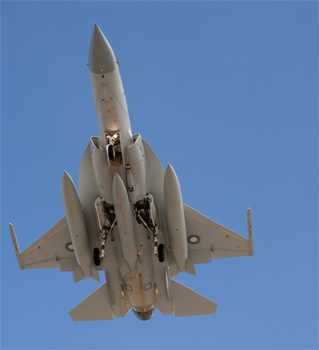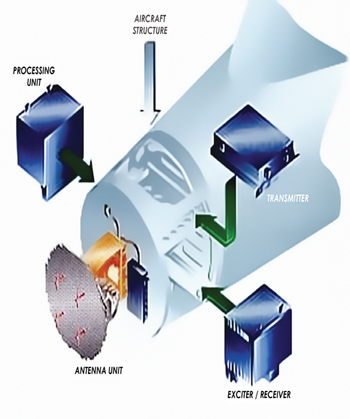JF-17 Thunder is an advanced, light-weight, all weather, day / night multi-role fighter aircraft; developed as a joint venture between Pakistan Aeronautical Complex (PAC), Kamra and Chengdu Aircraft Industry Corporation (CAC) of China. It possesses excellent air-to-air and air-to-surface combat capabilities. The state-of-the art avionics, optimally integrated sub-systems, computerized flight controls and capability to employ latest weapons provides decisive advantage to JF-17 over adversaries of same class. This, all weather, multi-role light combat fighter has remarkable high combat manoeuvrability at medium and low altitudes. With effective firepower, agility and combat survivability, the aircraft is likely to emerge as a potent platform for any air force.
Progress
The first JF-17 prototype aircraft (called FC-1) was rolled out in May 2003. It made its first flight in August 2003. Later on, two more prototype aircraft were added for basic structure, flight qualities, performance and engine flight testing while two prototype aircraft were involved in comprehensive avionics flight testing. The basic flight testing was completed in 2007 which also marked the arrival of JF-17 Thunder aircraft in Pakistan where it was formally presented to the nation as a Pakistan Day gift on 23 March 2007. A Test and Evaluation Flight was established at PAC Kamra which carried out the detailed operational evaluation of the aircraft as well as the training of ground and air crew. The JF-17 aircraft has been formally inducted in Pakistan Air Force by replacing A-5 aircraft of an Operational Squadron of PAF. The aircraft was show cased for the first time at Farnborough Air Show UK in the year 2010.
Pakistan Aeronautical Complex (PAC) holds the exclusive rights of 58% of JF-17 airframe co-production work. A comprehensive infrastructure comprising state of the art machines and required skilled human resource has very quickly been developed at the Complex. The final assembly and flight testing of the aircraft was the first JF-17 co-production activity to start at PAC. The first PAC produced aircraft was handed over to Pakistan Air Force in November 2009. Since then, aircraft are being produced regularly to meet the required schedule. The co-production of sub assemblies and structural parts has also commenced and is sequentially attaining the sustained production status. Besides upgrading the production system, PAC has also upgraded its quality, technology and archive management systems to meet the production and management standards of a 3rd generation fighter aircraft.




